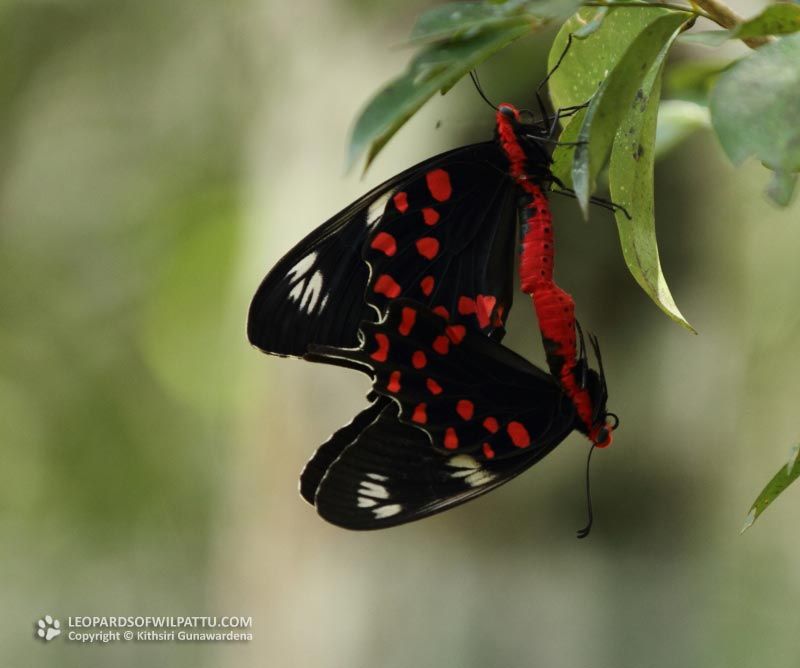
Butterflies ‹‹ Go Back
This butterfly, belonging to a group referred to as Red-bodied swallowtails by Lepidopterists, is also found in India and the west coast of Myanmar. As in Sri Lanka it is quite common in the Western Ghats in India. The conservation status of this species is regarded as Least Concerned (National Red List 2012) and it is protected under the Fauna and Flora Protection Ordinance as amended by Act No. 22 of 2009.
This is a common butterfly that is found in all the forested areas as well as urban areas in the dry and wet lowlands of the Country. It ascends the hills up to about 600 meters above sea level. Beyond the mid hills it becomes increasingly rare. It is a very strong flyer and I have seen them on a number of occasions about 5-6 kilometers out at sea off Mirissa and off the coast of Devils Point. On one occasion, while conducting a sea bird survey, I watched a few individuals flying above the Adams bridge islands towards India. The highest elevation at which I have recorded this species is at the Kosgolla Estate in the Knuckles forest reserve at an altitude of 860 meters. This species is common in the dry zone and is one of the commonest butterflies in all the dry zone National Parks. I have seen it in the Jaffna peninsula, Manner Island and the Delft Island as well. It is common in the wet zone as well and is not uncommon in the city of Colombo. These butterflies also inhabit the off shore islands of Palaithivu, Kakarathivu, Analathivu and Eluvathivu off the northwestern coast of Devils Point.
On a number of occasions I have observed this species as well as the Common Rose lay eggs on the Sap Sanda vine in my home garden in Colombo. The caterpillars feed on the leaves and the shoots of this vine and having fattened them selves after a about 10 days attach them selves and form their chrysalises on the trunks of nearby trees. The adult butterflies emerge in the early mornings.
Sap Sanda Aristolochia indica, Aristolochia bractolata and Thara Mal Aristolochia ringens are the host plants of these butterflies. Having one of these vines in the garden and ensuring that it is not sprayed with insecticides and pesticides will most certainly help the conservation of these butterflies.
As the bodies of these butterflies carry the chemical compounds found in the latex of their host plants they are not predated upon by birds and lizards. Taking advantage of this factor these butterflies have learned to fly slow conserving their energy and feed at leisure even during early mornings where predators such as lizards are also not active. The Common Mormon Papilio polytes which is a citrus feeder and is not poisonous to birds and lizards ect has evolved to take advantage of the benefits enjoyed by this species by mimicking them. One of the colour forms taken by the female Common Mormon is this species. Birds such as Bee-eaters that will predate on the usual colour form of the Common Mormon exhibits no interest in the female Common Mormon, which mimics the Crimson Rose. Even though these female Common Mormons are able to fly quite fast they even mimic the slow flight of the Crimson Rose.

